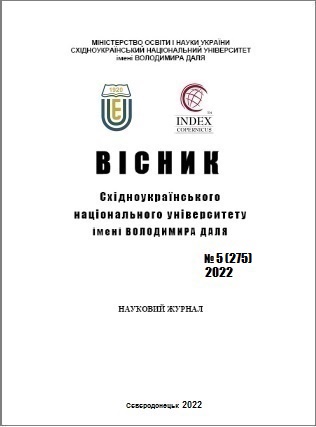Machine learning-based sludge identification on geospatial images
DOI:
https://doi.org/10.33216/1998-7927-2022-275-5-16-20Keywords:
remote sensing images classification, machine learning, waste accumulation sitesAbstract
In recent years, there has been an increase in cases of deformation of industrial sludge, which in many cases has a devastating impact on the environment and the ecosystem. Monitoring of Waste accumulation sites is crucial to prevent the destructive effects of deformation. Traditional monitoring methods require large resources and are also ineffective for early detection of potential deformation. Remote monitoring based on geospatial images is a promising area for monitoring of sludge caps with the purpose of early detection of potential deformation. The work presents the formalization of stages and determination of the methodology of Waste accumulation sites monitoring based on geospatial images using machine training methods: identified monitoring tools, formalized stages, developed a technical block diagram of the process. The defined methodology includes the following stages: (1) sampling and imagery, (2) classification using machine learning algorithms, (3) Validation of classification and model determination with the highest accuracy. The methodology is based on the use of Google Earth Engine (GEE). Platform tools include an interactive server of applications with an open data directory, computing integrated development environment, geospatial application programming interface (client libraries provide Python and JavaScript shells for web-API inrepresentational state transfer(REST) architecture). The practical implementation and quality assessment of the proposed methodology was carried out based on image data of Waste accumulation sites of the open joint-stock company (OJSC) «Lysychanska soda». Pre-processing of images: 1) selection of images without clouds, to improve the results. 2) unification of layers of remote sensing images. 3) annotation of objects, 4) separation of data into test and training sets of pixel data. The classification is implemented using Classification and Regression Trees (CART), Random Forest (RF) and Support Vector Machine(SVM) algorithms. The effectiveness of the models is determined based on the accuracy of identification. The highest accuracy on test data was achieved using SVM, which was 98.05%.
References
1. Celenza, G., 2019. Industrial waste treatment process engineering: Biological Processes. CRC Press.
2. Grebby S. et al. Advanced analysis of satellite data reveals ground deformation precursors to the Brumadinho Tailings Dam collapse. Communications Earth & Environment. – 2021. – Т. 2. – №. 1. – С. 1-9.
3. Robertson, P. K., L.d. Melo, D.J. Williams, and G.W. Wilson. Report of the Expert Panel on the Technical Causes of the Failure of Feijão Dam I. 2019. URL: https://www.resolutionmineeis.us/documents/robertson-et-al-2019 (дата звернення 10.12.2022).
4. Критська Я. О., Білобородова Т.О. Дослідження мето-дів обробки та аналізу геопросторових зображень для віддаленого моніторингу поверхневих вод. Вісник СНУ імені Володимира Даля. – 2022. – №. 1 (271). – С. 11-17.
5. Imran, Shabir Ahmad, Do Hyeun Kim. Quantum GIS based descriptive and predictive data analysis for effective planning of waste management. IEEE. – 2020. – Т. 8. – С. 46193-46205.
6. Kodwo Miezah, Kwasi Obiro-Danso. Municipal solid waste characterization and quantification as a measure towards effective waste management in Ghana. Waste management. – 2015. – Т. 46. – С. 15-27.
7. Cigna, F., & Tapete, D. (2021). Present-day land subsidence rates, surface faulting hazard and risk in Mexico City with 2014–2020 Sentinel-1 IW InSAR. Remote Sensing of Environment. – 2021. – Т. 253. – С. 112161.
8. Google Earth Engine. Developers.google.com URL: https://developers.google.com/earth-engine (дата звер-нення 10.12.2022).
9. Ghorbanzadeh O., Blaschke T., Gholamnia K., Meena S.R., Tiede D., Aryal J. Evaluation of different machine learning methods and deep-learning convolutional neural networks for landslide detection. Remote Sensing. – 2019. – Т. 11. – №. 2. – С. 196.
10. Roodposhti M. S., Aryal J., Bryan B. A. A novel algorithm for calculating transition potential in cellular automata models of land-use/cover change. Environmental modelling & software. – 2019. – Т. 112. – С. 70-81.
11. Mezaal M. R., Pradhan B., Rizeei H. M. Improving landslide detection from airborne laser scanning data using optimized Dempster–Shafer. Remote Sensing. – 2018. – Т. 10. – №. 7. – С. 1029.
12. Micheletti N, Foresti L, Robert S, Leuenberger M, Pedrazzini A, Jaboyedoff M, Kanevski M. Machine learning feature selection methods for landslide susceptibility mapping. Mathematical geosciences. – 2014. – Т. 46. – №. 1. – С. 33-57.
13. Huang Y., Zhao L. Review on landslide susceptibility mapping using support vector machines. Catena. – 2018. – Т. 165. – С. 520-529.
14. Kavzoglu T., Colkesen I., Sahin E. K. Machine learning techniques in landslide susceptibility mapping: a survey and a case study. Landslides: Theory, practice and modelling. – 2019. – С. 283-301.
15. Melville B., Lucieer A., Aryal J. Object-based random forest classification of Landsat ETM+ and WorldView-2 satellite imagery for mapping lowland native grassland communities in Tasmania, Australia. International journal of applied earth observation and geoinformation. – 2018. – Т. 66. – С. 46-55.
16. Shaikh M. A. Using GIS in Solid Waste Management Planning: A case study for Aurangabad, India. – Institutionen för datavetenskap, 2006.
17. Sentinel-2 MSI: MultiSpectral Instrument, Level-2A. Developers.google.com URL: https://developers.google.com/earth-engine/datasets/catalog/COPERNICUS_S2_SR. (дата звернення 10.12.2022).

